Do I Need To Register As A Self-Employed Sole Trader?
Article Author: Amanda Swales Posted on: October 14, 2019 (Full Author Bio in the box on the right side) 3660 views
3660 views
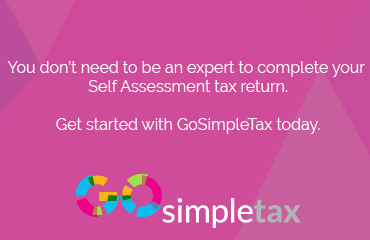
Understanding whether or not you’re self-employed means you’re aware of your tax obligations and responsibilities. HMRC will penalise you if you exceed your trading allowance, so it’s worth knowing precisely where you stand.
But there’s an incentive too… Knowing your status helps you access tax relief which could reduce your tax liability and optimise processes – plus you won’t have to worry about being incorrectly taxed.
The trouble is, it can be confusing to determine if you’re regarded as self-employed. Thankfully, Mike Parkes from GoSimpleTax outlines below who needs to register as self-employed to stay compliant, and how to do so.
What is self-employment?
There are certain distinctions that set those that are self-employed apart from regular employees. These generally include:
- Operating a service that relies solely on you
- Having multiple customers at the same time
- Having the freedom to hire others at your own expense who help deliver or develop your offering
It’s worth mentioning that you could be doing all of the above – and more – in addition to your employment. For example, if you work in a 9-5 role and sell goods in the evening to make a profit, you are both employed and self-employed.
How do I know if I’m self-employed?
If you earn more than £1,000 from self-employment within a single tax year, the chances are that you are operating as a sole trader. However, if you’re uncertain of your status, take HMRC’s test.
Sole traders run their own business as an individual. They’re entitled to keep all the business’ profits after tax has been paid, are liable for any losses the business makes and must stick to rules surrounding running and naming their business.
Once you’ve determined your employment status, all that’s left to do is register. After registering, you’ll need to keep records of all business sales and expenses following your status change. Plus, you’ll be required to send an annual Self Assessment tax return as well as pay Income Tax on your earnings.
Where do I register?
It’s simple: log on to HMRC and register yourself for sole trader status. Once done, you’ll receive a 10-digit unique taxpayer reference (UTR) number. With this, you’ll be able to set up your account for the Self Assessment online service.
Alternatively, you can choose to fill out this form online, print it, and then post it to HMRC. The downside to this method is that you won’t be able to save the document and return to it at another time. Everything will need to be completed and sent in one sitting.
You must have registered by the 5th October during your business’ second tax year. Failing to do so could result in being fined.
Once registered, you need to submit your Self Assessment tax return by 31st October (paper returns) or 31st January (online returns) – and pay your tax bill on the January date too. Additionally, if you make advance payments towards your tax bill, your second payment on account is due on 31st July.
About GoSimpleTax
When it comes to submitting the Self Assessment tax return itself, use an accounting software solution which easily formats and sends it directly to HMRC. GoSimpleTax is one such solution.
GoSimpleTax is HMRC-recognised and offers first-time submitters a near-effortless experience in dealing with their newfound tax responsibilities. If you’re interested in focusing more on earning during self-employment take a free 14 day trial of the software – no credit card required.
Latest Posts
-

Staying HMRC Compliant: VAT Returns Have Chan...
by Amanda Swales on January 29, 2020 Accounting & Tax -

Self Assessment Tax Return 101 - Filling In T...
by Amanda Swales on January 15, 2020 Accounting & Tax -

-



 How long to keep your PAYE records
How long to keep your PAYE records  Cloud Accountancy for Contractors: Do you find it mystifying?
Cloud Accountancy for Contractors: Do you find it mystifying?  Are you aware about the new HMRC Your 2016 Tax Report Phishing Scam?
Are you aware about the new HMRC Your 2016 Tax Report Phishing Scam?  Scotland Vs England And Wales: What Are The Differences In Tax?
Scotland Vs England And Wales: What Are The Differences In Tax?  Beginners guide to business tax deduction
Beginners guide to business tax deduction  5 reasons to update your self-assessment throughout the year
5 reasons to update your self-assessment throughout the year  3 Tips For Handling The Paper Tax Return Submission
3 Tips For Handling The Paper Tax Return Submission 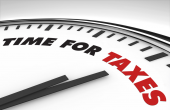 Deadline day penalties: a subjective approach
Deadline day penalties: a subjective approach  A Guide To Tax Changes Impacting Landlords
A Guide To Tax Changes Impacting Landlords  The Tax Investigation Process
The Tax Investigation Process 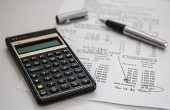 What is a second payment on account and how is it calculated?
What is a second payment on account and how is it calculated?  Do I Need To Register As A Self-Employed Sole Trader?
Do I Need To Register As A Self-Employed Sole Trader?  Review bid gets crucial boost from influential and campaigning politician
Review bid gets crucial boost from influential and campaigning politician  Top 3 Reasons Why Freelancers and Contractors should hire an Accountant
Top 3 Reasons Why Freelancers and Contractors should hire an Accountant  Choosing the right VAT route
Choosing the right VAT route  Who Needs A UTR Number Anyway?
Who Needs A UTR Number Anyway?  IT Contractors - Profit extraction by dividend payment
IT Contractors - Profit extraction by dividend payment 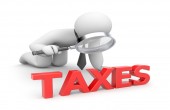 PAYE Week 53 payments HMRC
PAYE Week 53 payments HMRC  Self Assessment Tax Return 101 - Filling In The Form Fast
Self Assessment Tax Return 101 - Filling In The Form Fast 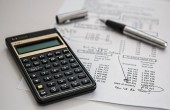 The top 6 most common mistakes made on Self Assessment Tax Returns
The top 6 most common mistakes made on Self Assessment Tax Returns  Staying HMRC Compliant: VAT Returns Have Changed
Staying HMRC Compliant: VAT Returns Have Changed  Should an IT contractor become VAT registered
Should an IT contractor become VAT registered  How To Make The 2019-20 Tax Year The Time Of Tax Savings As A Sole Trader
How To Make The 2019-20 Tax Year The Time Of Tax Savings As A Sole Trader  Key tax dates coming up in July
Key tax dates coming up in July 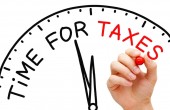 Top Tax Tips for UK Contractors and Freelancers
Top Tax Tips for UK Contractors and Freelancers  Corporation Tax: Late Payment penalties and interest charges explained
Corporation Tax: Late Payment penalties and interest charges explained 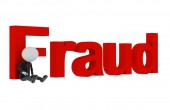 HMRC Taskforces Targeting VAT Fraud
HMRC Taskforces Targeting VAT Fraud 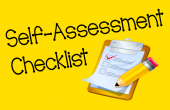 Self Assessment Payments on Account
Self Assessment Payments on Account  Top Tax Changes That Contractors Need To Know
Top Tax Changes That Contractors Need To Know  Are You Declaring All Of Your Earnings To HMRC?
Are You Declaring All Of Your Earnings To HMRC? 

